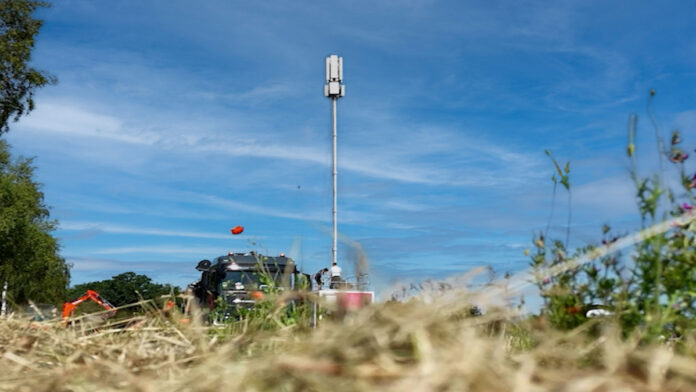Deutsche Telekom said that around 98% of households can already access the carrier’s 5G network
In sum, what to know:
276 new mobile sites added – Deutsche Telekom expanded its network with 276 new sites between March and May, while upgrading over 1,200 existing ones, many of which were connected to 5G.
5G now reaches 98% of households – Nearly all German households now have 5G access, and LTE covers almost 100%. The company aims to double network capacity by 2027 using a mix of spectrum bands.
Berlin network sees major boost – Deutsche Telekom operates over 1,070 mobile sites in Berlin and plans to build 200 more in the next three years.
German telecom operator Deutsche Telekom expanded its mobile network between March and May adding a total of 276 new mobile radio sites across the country. In a release, the operator also said it has also increased capacity at 1,209 existing sites during the period. 5G technology was connected for the first time at 278 of these sites.
Around 98% of households can already access Deutsche Telekom’s 5G network, while LTE coverage currently reaches almost 100% of households across Germany.
“Deutsche Telekom is building Germany’s first ultra-high-capacity network by 2027. A combination of measures will double the capacity of the Deutsche Telekom network. Ninety percent of the locations will offer a download capacity of 1 gigabit per second per cell. All locations will use low-band frequencies (700, 800 and 900 MHz). These offer long-range and good network coverage — even in buildings,” the telco added.
Deutsche Telekom also noted that 90% of the locations will also receive mid-band frequencies (1,500, 1,800 and 2,100 MHz), which enable high transmission rates and fast response times. It explained that the 3.6 GHz band will be used specifically at traffic hubs.
In a separate release, Deutsche Telekom said it now operates more than 1,070 sites in the Berlin metropolitan area. The company said it plans to expand over 100 of these to include 5G. In addition, around 200 new mobile radio sites are to be built over the next three years. To achieve this, the telco said it continues to rely on cooperation with public and private owners to lease suitable space for antenna sites.
The telco previously highlighted that 5G antennas on the 3.6 GHz frequency are particularly powerful, because they are almost exclusively connected to the transport network with a 10 Gbps connection via fiber optics. The telco noted that the 3.6 GHz frequency band supplements the 5G frequencies in the 700 MHz and 2.1 GHz range, which are already in use nationwide in the Deutsche Telekom network. Especially in densely populated areas, the 3.6 GHz frequencies ensure particularly high download speeds and smooth mobile phone coverage, the carrier said.
Deutsche Telekom had previously made private 5G available in millimeter wave (mmWave) spectrum at 26 GHz for the first time in Germany. It claims the band allows for round-trip latencies of three to four milliseconds and download and upload data rates of more than four and two gigabits per second, respectively. It is offering mmWave support as part of its ‘campus network’ offer, which has until now used the dedicated 3.7-3.8 GHz mid-band spectrum in Germany.
Higher-band mmWave spectrum offers a shorter coverage range, but a higher bandwidth and higher speeds. In Germany, the 26 GHz band has been allocated exclusively by national telecoms regulator BNetzA to enterprises for localized applications by the Federal Network Agency. It can currently only be used for local applications. Deutsche Telekom said it has now trialed 5G frequencies in the mmWave range at 26 GHz with industrial customers.

